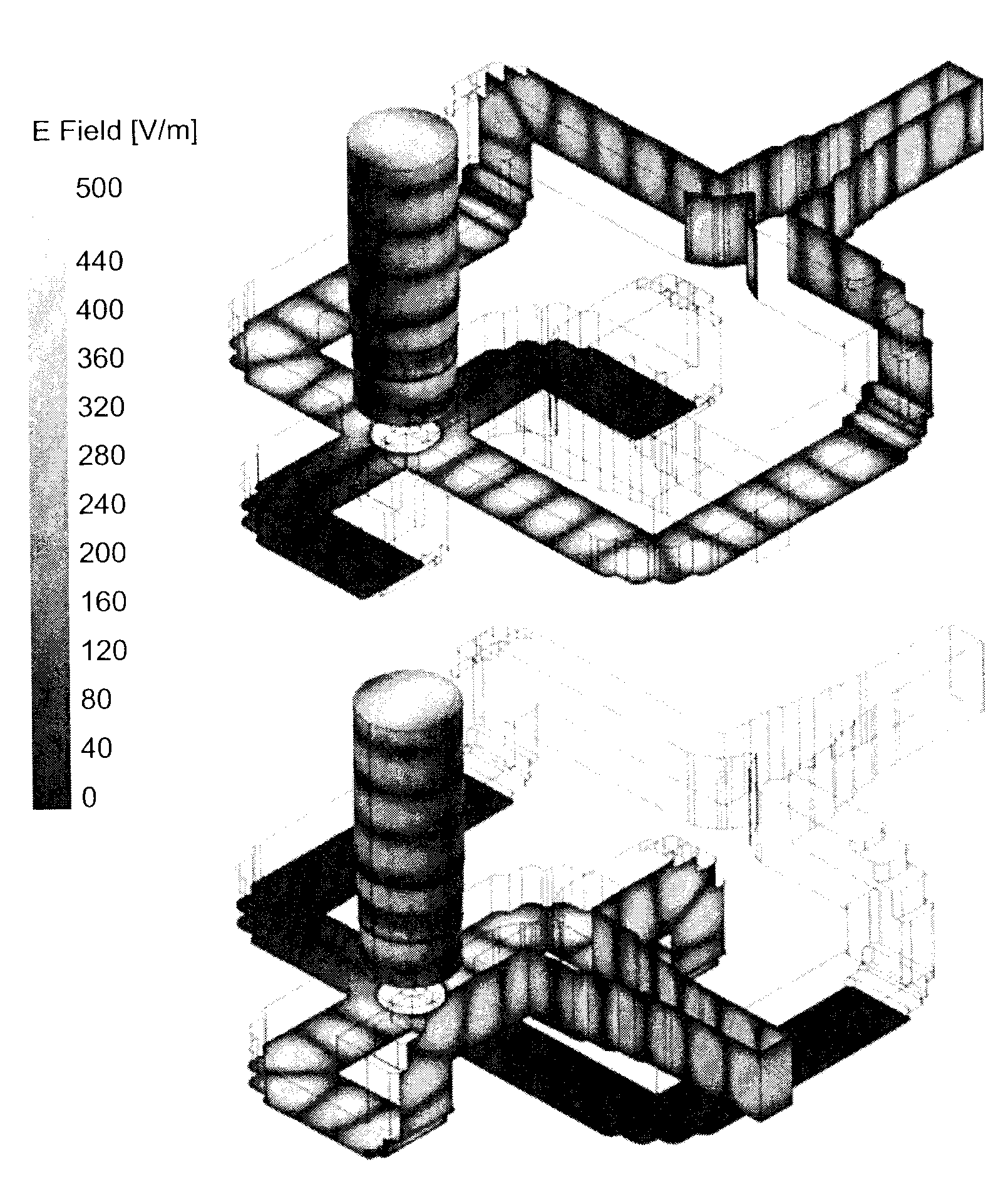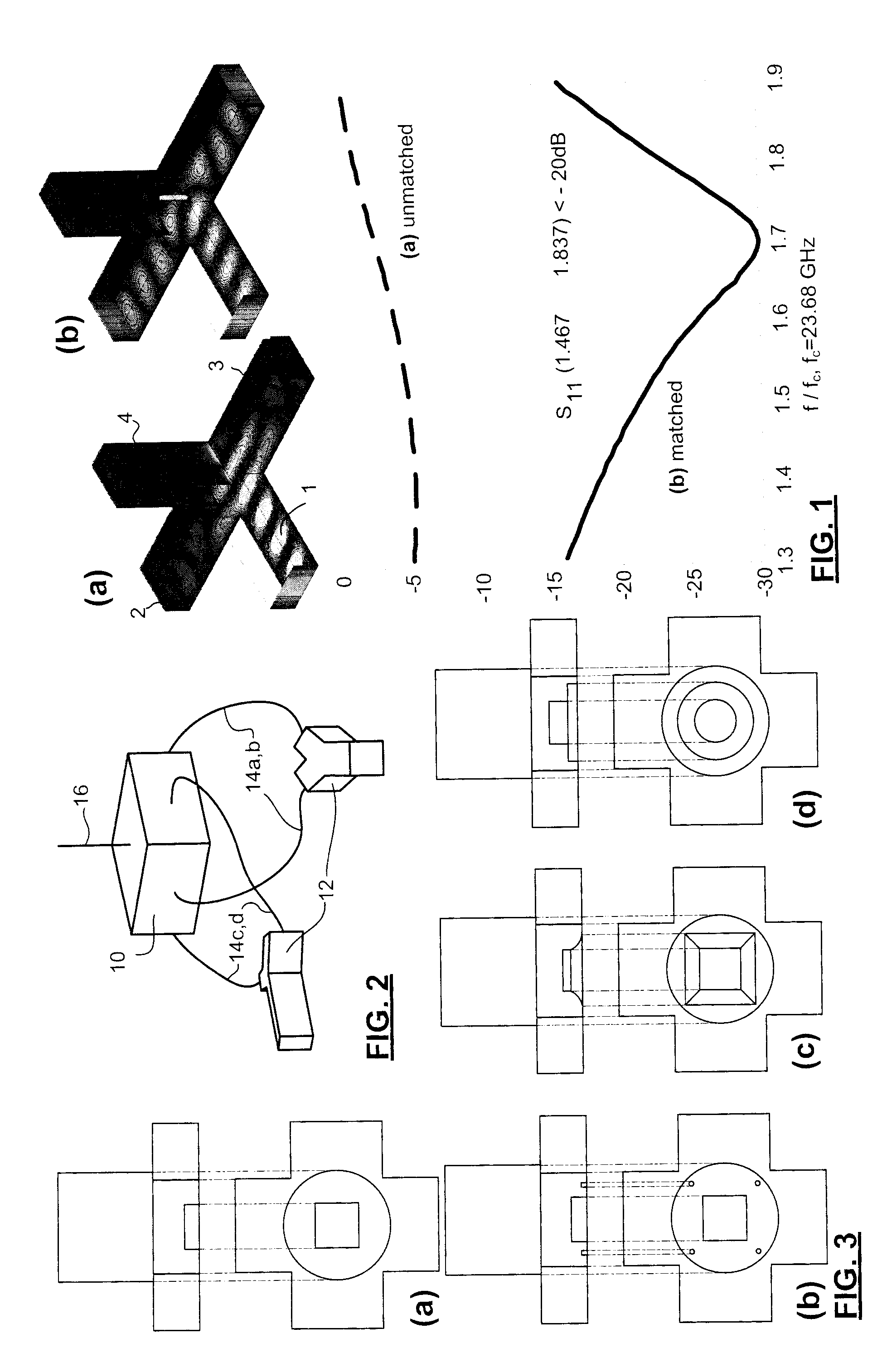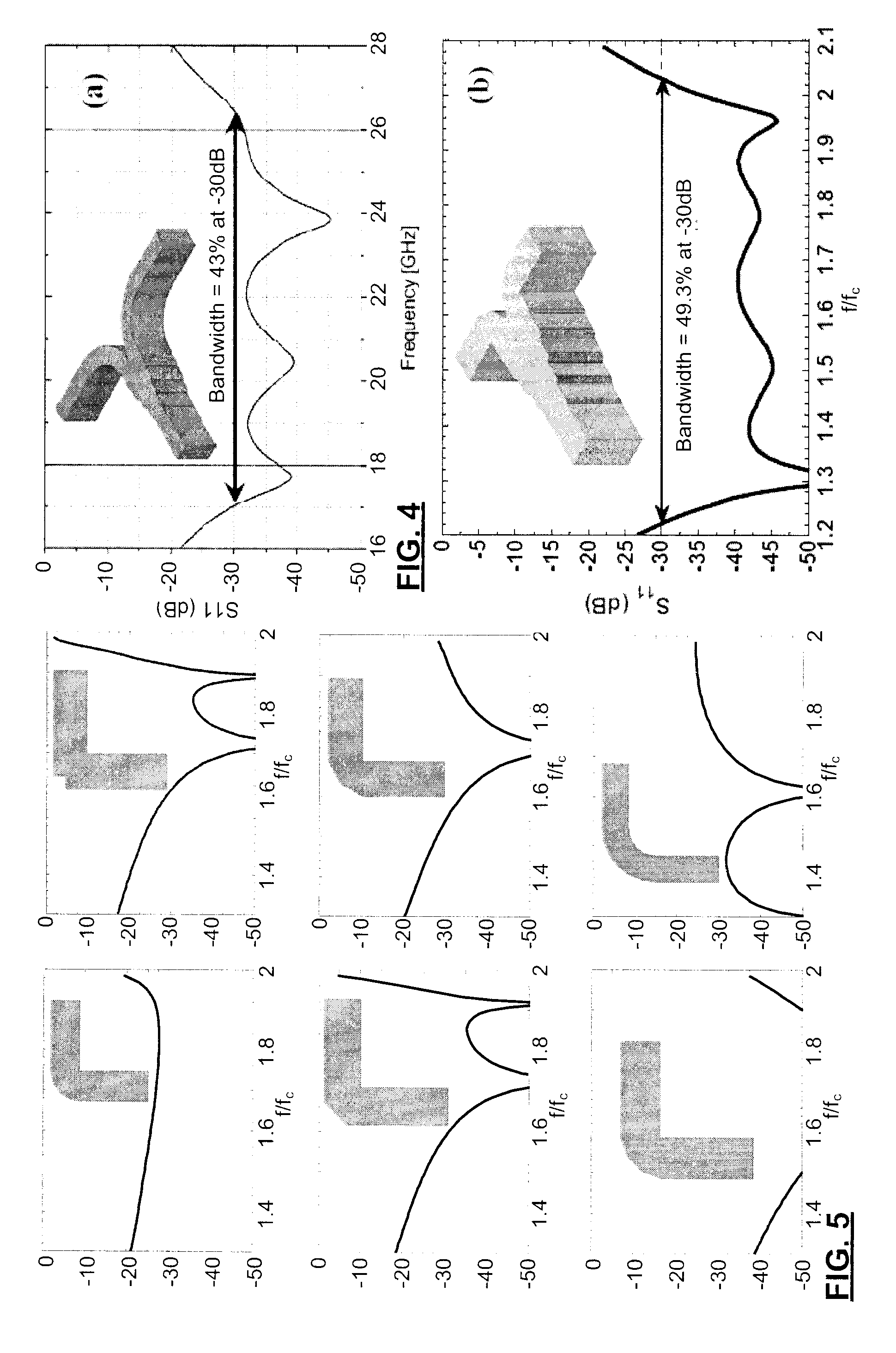Orthomode transducer
a transducer and orthomode technology, applied in the direction of waveguide type devices, coupling devices, basic electric elements, etc., can solve the problems of increasing the cost of the device, increasing the return loss, and complicating assembly, so as to facilitate miniaturization and production, improve the quality of the omt, and the effect of high frequency
- Summary
- Abstract
- Description
- Claims
- Application Information
AI Technical Summary
Benefits of technology
Problems solved by technology
Method used
Image
Examples
example
[0083]To manufacture an OMT in the 30-45 GHz band, we used a conventional CNC machining with standard carbide end mills (no exotic diameters or lengths of cut). A block of aluminum was diced and surface formed by milling, and throughbores were made by drilling. The waveguide paths were rectangular, having dimensions (WR22: 6.33×3.25 mm2), but this design could be used from WR-650 (1.12-1.7 GHz, 16.51×8.255 cm2) to WR-3.7 (200-270 GHz, 0.94×0.47 mm2) and beyond for both narrow and broadband OMTs.
[0084]FIG. 7a is a photograph of two of the OMTs produced, one in assembled, and the other in disassembled form. The turnstile plane is shown on the middle block at the far right, of the disassembled OMT, revealing the matching feature and initial segments of the waveguide paths, and H plane bends. Various holes were used for alignment of the OMT blocks. The assembly is quick and the precision of alignment is excellent. The machining tolerances were between + / −20 μm (for bends and waveguide p...
PUM
 Login to View More
Login to View More Abstract
Description
Claims
Application Information
 Login to View More
Login to View More - R&D
- Intellectual Property
- Life Sciences
- Materials
- Tech Scout
- Unparalleled Data Quality
- Higher Quality Content
- 60% Fewer Hallucinations
Browse by: Latest US Patents, China's latest patents, Technical Efficacy Thesaurus, Application Domain, Technology Topic, Popular Technical Reports.
© 2025 PatSnap. All rights reserved.Legal|Privacy policy|Modern Slavery Act Transparency Statement|Sitemap|About US| Contact US: help@patsnap.com



